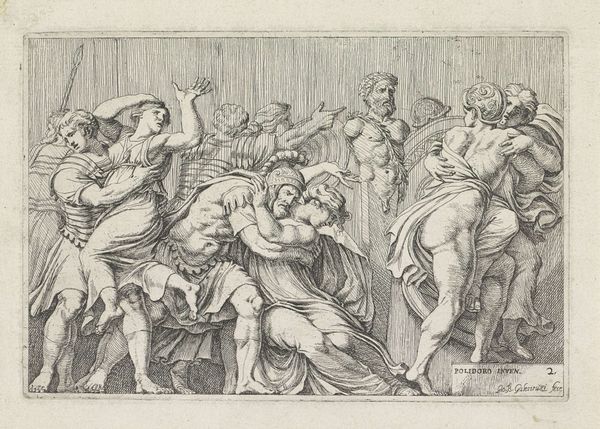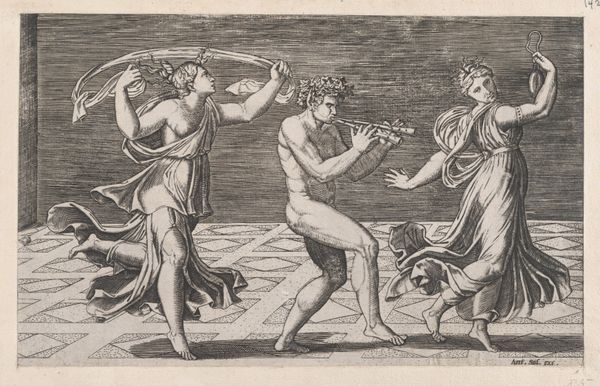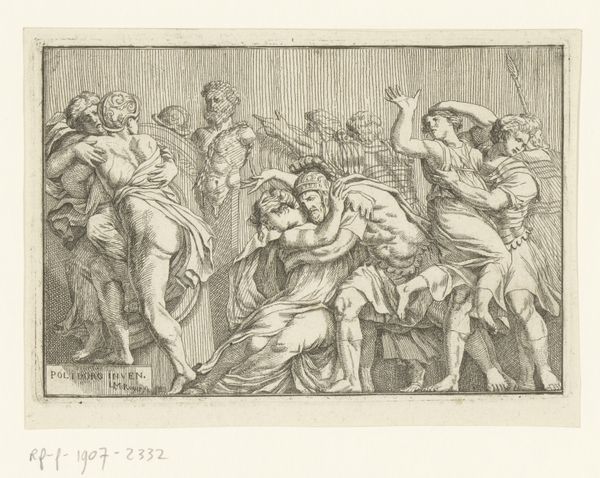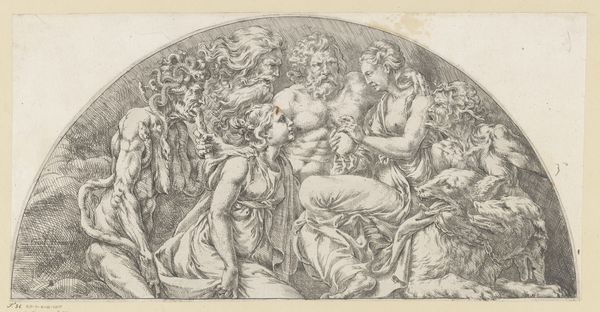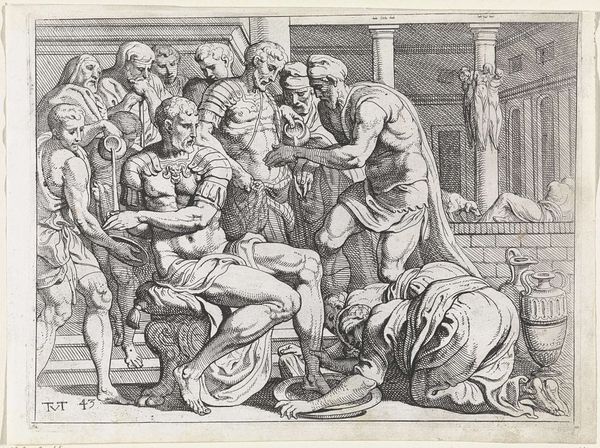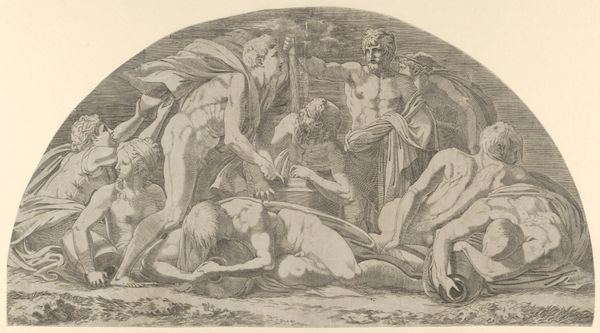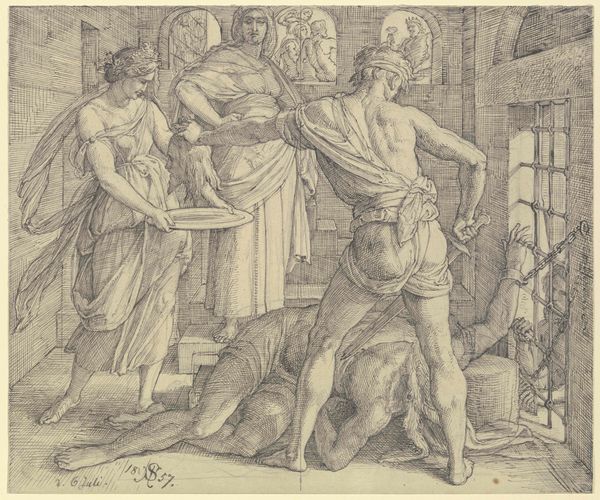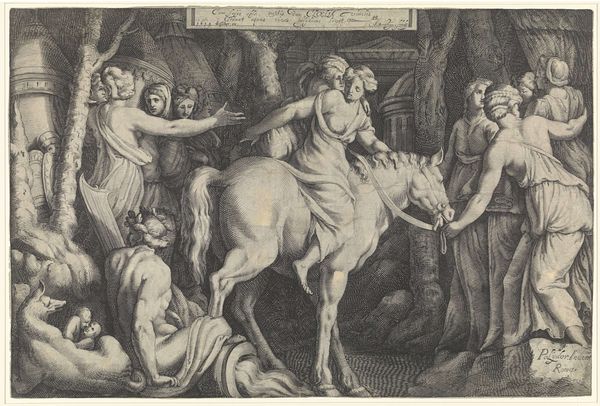
A Bacchanal, Silenus supported by two bacchants in the centre, at right a female satyr reclining on a bed and another pulling the horns on a statue of Priapus, various other figures fill the composition 1505 - 1515
0:00
0:00
Dimensions: Sheet (Trimmed): 5 7/8 × 20 3/8 in. (15 × 51.8 cm)
Copyright: Public Domain
Curator: Let’s take a closer look at Marcantonio Raimondi's "A Bacchanal," a print from between 1505 and 1515, currently housed at the Metropolitan Museum of Art. What strikes you immediately? Editor: A scene of absolute mayhem! The dense composition seems to spill out from the constraints of the picture plane. There's a real energy in the interlocking figures. Curator: Indeed, the composition pulses with a life force that recalls classical precedents even as it asserts Mannerist principles through dense crowding of figures and exaggerated poses. Consider Raimondi’s process—the painstaking translation of the drawn or painted line into the graphic mark. Editor: Right. The texture really intrigues me. Engraving demands such labor! Every line, every hatch mark is a deliberate, physical act. We see how metal is being pushed, manipulated to transfer into a printed image for distribution. How might we account for this physical aspect of the craft? Curator: Raimondi, as an engraver, doesn’t simply reproduce; he interprets. Note how the stark contrast furthers the dramatic play between light and shadow, directing our eyes across the elaborate tableau. The symbolism is also key: the inebriated Silenus, the satyrs, all representative of the ecstatic and chaotic rituals honoring Bacchus. Editor: But beyond symbolism, look at what's being *done* to Priapus’s statue! Someone is quite literally tweaking its horns – the potential transgressive, the challenging of decorum becomes clear in these acts. The materiality suggests irreverence; we’re not just witnessing a scene, but one where art-making itself becomes participatory, tactile, almost…crude. Curator: I can agree with that. These bodies, rendered with precise anatomical knowledge, nevertheless become vehicles for expressing a heightened emotional state. There's an element of almost unsettling ecstasy. Editor: And what does it mean when *engraving* translates the supposed "freedom" of that emotional and social expression? What restraints did he chafe against, given his work within this very disciplined medium and its constraints? Curator: It's a fascinating contrast, isn't it? Restraint and abandon intertwined, both formally and thematically. Editor: This bacchanal, therefore, invites us to reflect upon the tensions between impulse and discipline. Curator: A vital lesson that remains potent even centuries later.
Comments
No comments
Be the first to comment and join the conversation on the ultimate creative platform.

